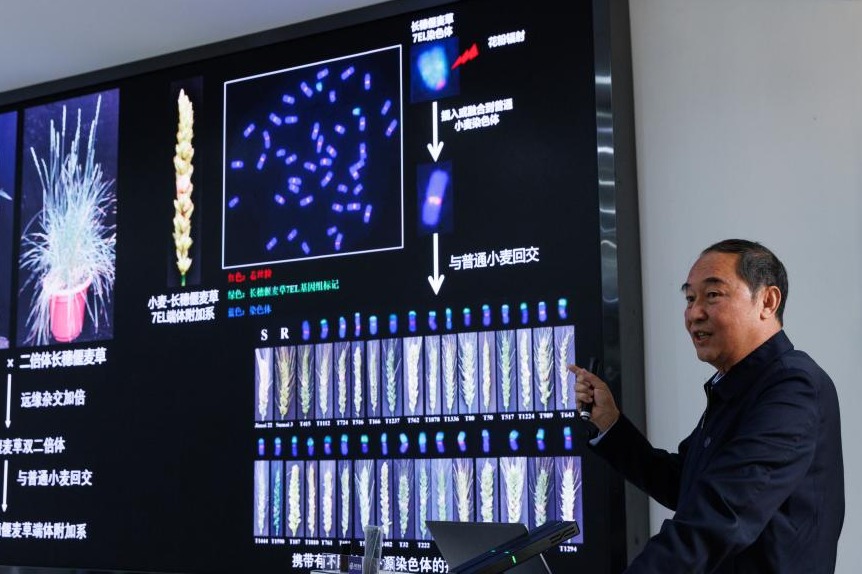Restored point of interest removes its 'mask'

HANGZHOU-While the cherry blossoms beside the Yellow Crane Tower in Wuhan in Central China's Hubei province mark the much anticipated arrival of spring after a long winter, another iconic Chinese edifice was also removing its "mask" to breathe in the spring air.
As the lockdown of Wuhan came to an end on Wednesday, Baochu Pagoda, a landmark on the northern shore of the West Lake in Hangzhou in East China's Zhejiang province, was freed from its own cage after four months of intensive restoration work.
Listed as a national cultural relic in 2013, Baochu Pagoda sits on the top of Baoshi Mountain, which means "precious stone" in Chinese.
In 2018, the top of the pagoda's spire was found to be leaning and in need of repair. It was put into restoration in October.
According to Tian Qiang, an engineer from the pagoda's administration office, the slant might have been caused by weathering and the external force of kite strings.
Knowing that the pagoda was "sick", experts in the field of cultural relic restoration came to its aid.
To restore the spire without causing any damage to the pagoda, it took around 20 days to build a 46-meter high scaffold around it.
The Chinese Academy of Cultural Heritage and other institutions offered their suggestions on the process of removing the spire, as well as providing data support for the repair and restoration of the leaning section via x-ray inspection and 3D digital scanning.
Ancient scripture was also found on the top of the spire. "Although the damage to the spire is kind of critical, it still reflects the delicacy of ancient Chinese bronze casting techniques. The ancient Chinese could even carve on a thin copper sheet," says Ma Jinyu, an expert with the Chinese Academy of Cultural Heritage.
After months of work, the well-restored pagoda, with its delicate spire, stood out from the green forest.
"The removal of the scaffold marks the completion of maintenance work of Baochu Pagoda, despite being affected by the epidemic outbreak," says Xu Lili, from the pagoda's administration office.
"Now, the scaffolding has been removed; we will clean the closed area and get down to the work of afforestation and environmental restoration. As of April, visitors will be able to visit the 'healed' Baochu Pagoda again," Xu says.
The pagoda was first built more than 1,000 years ago. It was changed into a seven-story pagoda when it was rebuilt during the Northern Song Dynasty (960-1127).
Xinhua

Today's Top News
- Five continents, five rhythms in 2025
- Lawmakers review draft law to expand childcare services
- China's new-style tea brands find a hot new market in US
- Xi extends congratulations to Chilean president-elect
- Japan urged to stop provocative moves
- Shanxi ends province-wide blanket fireworks ban






























